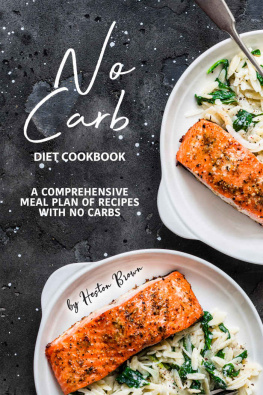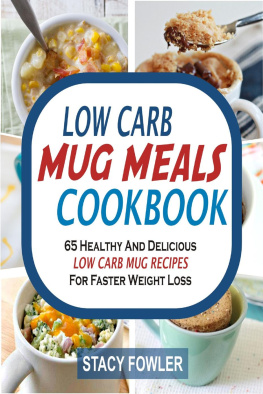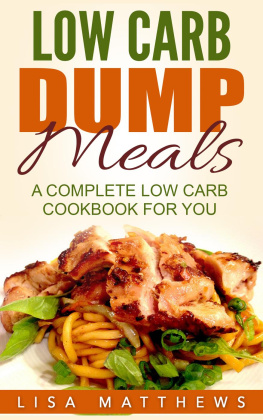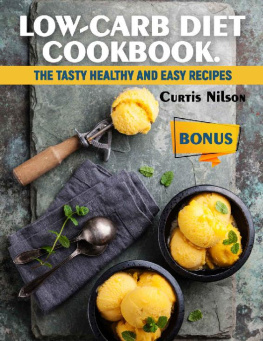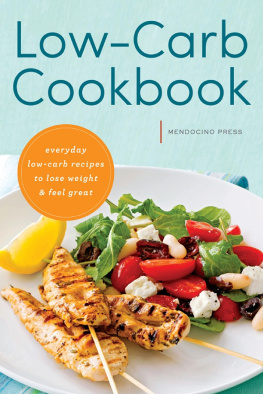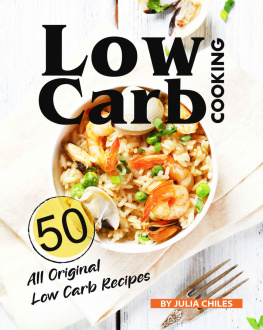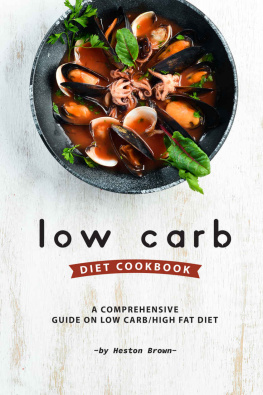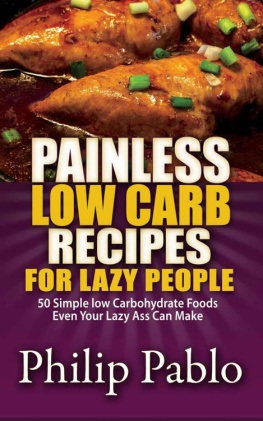Easy Low-Carb Cookbook
Best Recipes with Low-Carb Content to Prepare at Home
BY
Clare Smitham
Copyright Clare Smitham 2021
License Notes
All rights to this material are reserved and it is prohibited to use this book for personal or commercial use without the written permission of the author. It is expressly forbidden to reproduce this work in any format, manual, or electronic without said permission.
Any damages caused by the misinterpreted actions of the reader are solely the responsibility of the reader. This e-book is for informational and entertainment purposes only and the author accepts no liability or responsibility for any personal or commercial damage resulting from this material. The reader assumes all risk when following the content of this material.
A token of my esteem!
I would like to thank you for downloading my e-book by giving you a special offer that you can take advantage of from the comfort of your own home. I firmly believe you have made the right choice in choosing me and I want to show you my gratitude!
When you fill in the information in the box below, you will begin receiving the fantastic offers of free and discounted books every day! Just a small thanks for choosing my book.
When you subscribe, the deals will fill your inbox every day. Worried about missing one or forgetting it? Dont be! A reminder email will be sent, so you never miss your favourite books. With just a few easy details, you will be on your way to receiving amazing books at great prices.
Dont wait another minute! Subscribe now!
https://clare.getresponsepages.com
Table of Contents
Introduction
Everyone has their eating goals. Some want to add weight, while some want to reduce weight. Others engage in clean eating habits while others don't mind at all. If you are looking for a low-carb diet cookbook, look no further. This cookbook is ideal for all your low-carb diet needs. It can be a hard time sticking on a diet, especially when you get home late while extra tired, but you must fix something to eat. The recipes included in the cookbook have low-carb content, and you can prepare them quite faster without many struggles. You don't need to have professional papers in the kitchen to make such recipes. Above all, the ingredients used in the recipes are readily available in groceries and shops. You won't struggle to get the ingredients since we use them daily in our kitchens. Again, you can get creative in your kitchen while preparing the recipes. That implies that you can include other low-carb friendly ingredients to spice up your meals.
Most people have less time to prepare breakfast in the mornings because of rushing to beat the morning rush. Some end up skipping breakfast meals which isn't appropriate for our bodies. When on a low-carb diet, you need to implement recipes to keep your body with enough energy to keep you moving. Most of the recipes included in the cookbook take less time to prepare, and you won't struggle with the procedure. Therefore, you won't have any reasons for skipping meals, be it breakfast, lunch or even dinner. The recipes are specifically modified just for you.
Some Other Contents Related to the Topic to Get Readers more Involved
Before you dive right into your new low-carb lifestyle, there are a few topics that must be discussed. I will touch on exactly what carbs are, how they affect your body, and what it means to eat low-carb.
Understanding Carbs
They are among the three macronutrients, along with fat and protein. Macronutrients (macros) are the components of food that provide the body with energy. Carbohydrates are the primary source your body uses for energy. Protein helps the body build muscles and balance hormones. And fat helps the body absorb vitamins as well as keep the body feeling full for longer periods of time. All three macronutrients are required for your body to function at optimal levels on a daily basis. When you consume carbohydrates, your body begins to break them down into glucose, also known as blood sugar. Glucose is responsible for providing your body the necessary energy to function.
There are two types of carbohydrates, simple and complex. Complex carbs, aka "good" carbs, are those that are nutrient-rich and positively fuel the body. Examples of complex carbs are root vegetables, fresh fruits, legumes, nuts and seeds. The "good" carbs are often filled with larger amounts of fiber and will help the body feel full longer. Simple carbs, often referred to as "bad" carbs, are those that offer minimal nutritional value. The examples would be potatoes, rice, sugar, fruit juices, corn syrup, soda and prepackaged sweet treats.
When "bad" carbs are overconsumed, it may result in an increase in blood sugar levels. That is because the body can digest the simple carbs more quickly than it can do with the more complex "good" carbs. For the reason, you may quickly feel hungry and tired. Consuming too many of the "bad" carbs can possibly lead to diabetes or other health issues. When reaching for carbohydrates, always steer toward a quality complex carb that will benefit your body.
If an excess of carbs is consumed, the body will eventually break them down and store them as fat. When you decrease your carb intake and "starve" the body of its preferred energy source, it must pull energy from another source. That is when fat steps up to the plate and becomes the new source of energy. Fat has double energy as a carbohydrate (9 calories per gram of fat versus 4 calories per gram of carbohydrate) and will provide the body with more of a long-lasting source of energy.
What are Carbs?
At some point, you have heard of or possibly even tried many of the popular low-carb diets out there, like Keto, Paleo and Atkins.
This cookbook falls under the "general low-carb" diet category, which means it does not adhere to any of the listed diets. However, many of the recipes will work for the popular diets, or the recipes can easily be tailored to meet the required macros of the diets. For the cookbook, low-carb is defined as 80 to 100 grams of net carbs per day. I wanted to give a range of it because there is a lot of variation in how people eat low-carb, and you should feel free to tinker and figure out what works for you and your health goals. So, you don't have to eat 100 grams of net carbs a dayyou can stick to the lower end of the range or go even lower if that it works for you.
How to Count Carbs
Carb counting is imperative when following a low-carb diet in order to achieve success. The fiber in many whole foods is not fully digested by the body, so that is why we determine carb intake by calculating the net carbs. To find how many net carbs are in a product, use the following formula: net carbs = total carbs fiber sugar alcohols/sweeteners (if applicable). The recipes in this cookbook will give you the net carb counts as well as the macro percentages. Not everyone tracks them, but if you are on a keto diet, they will be useful to you.


